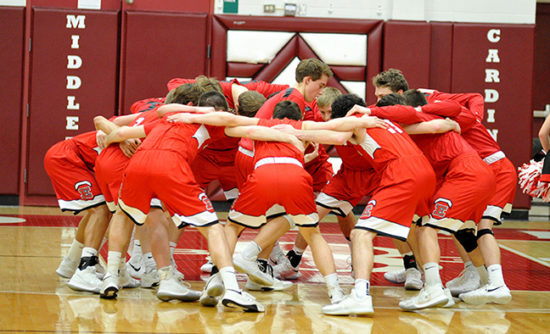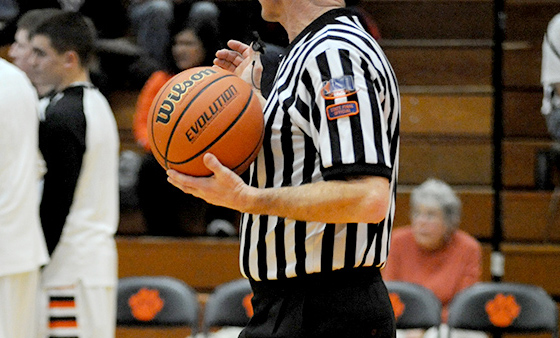5 ways standards define and differentiate your program
Every team trains, every team lifts, every team conditions. It’s not that you do those things. It’s at what standards you do those things.
The concept of establishing and embracing high standards resonates with lots of coaches. Without a doubt, your team’s standards define and differentiate your program. If you can establish high standards early on, get your staff and athletes to fully embrace them, and ultimately hold each other accountable and enforce them with each other, you will create a championship culture that allows you to consistently win on and off the field and court.
 In looking at the success secrets of the more than 25 NCAA national champions we worked with in writing our book “How to Build and Sustain a Championship Culture,” we’ve discovered five important ways that championship teams set standard in their programs — and many times set the standard in their sport as well.
In looking at the success secrets of the more than 25 NCAA national champions we worked with in writing our book “How to Build and Sustain a Championship Culture,” we’ve discovered five important ways that championship teams set standard in their programs — and many times set the standard in their sport as well.
Turn the microscope on your program to see how well your team employs each of the concepts.
1. High standards.
Not surprisingly, championship cultures have extremely high standards of behavior in virtually everything they do, especially in key areas. They expect and demand a lot from each other because they know these high standards give them a critical edge over their competition. As Michigan softball coach Carol Hutchins said, “You better raise your standards, because we are not going to lower ours.”
These high standards apply to several areas including practices, weights, conditioning, nutrition, sleep, social life and typically extend beyond the playing field when it comes to academics and giving back to the community.
As mentioned, every team trains, every team lifts, every team conditions. It’s not that you do those things. It’s at what standards you do those things.
Does your team do them with full focus and effort and push through their comfort zone to get better? Or does your team simply train, lift and condition at an existent or compliant level and skip workouts if no one is watching or holds them accountable?
What other programs might be able to get away with on a regular basis, championship programs would never think of doing.
The high standards of behavior aren’t just applied once and forgotten. The standard is an every day expectation and obligation that people will bring their best effort. This constant and sustained commitment to excellence then is a key factor in championship cultures getting the most out of their potential.
When everyone demands the best from each other, you create such a high-level, focused, and intense environment in your workouts that everyone can’t help but get better. For championship cultures, practices are often more intense than games because everyone competes at such a high standard.
Disney is a great example of a company culture that is all about having high standards of behavior. When you go to any Disney venue, be it the Magic Kingdom, Epcot, Animal Kingdom, Downtown Disney or a Disney Cruise, you notice a tremendous attention to detail. Their places are squeaky clean because of their high standards.
Disney trains and employs people whose sole job is to pick up trash on the ground almost as soon as it is dropped. Disney’s high standards are what differentiates them from many of their competitors and makes them one of the world’s most respected companies.
How do your standards of behavior differentiate your program?
Legendary San Francisco 49ers coach Bill Walsh said, “If you were lucky enough to receive a 49er paycheck, it meant you were part of an organization that had high expectations of itself and of you, whether you were a superstar or a secretary, manager or maintenance man, athlete, executive or head coach. Those expectations, of course, went beyond ethics and attitude to specific performance standards and actions.”
2. Uncompromising standards.
Pittsburgh Steelers coach Mike Tomlin has a succinct but powerful phrase that he repeatedly uses: “The standard is the standard.” This great phrase has a variety of important meanings when it comes to standards of behavior.
 Coach Tomlin will not compromise the Steelers’ standards in terms of the winning tradition they have developed. He is not going to compromise the standard when a sub has to replace a starter. He is not going to compromise the standard when selecting or trading for players who fit the Steelers’ culture. He is not going to compromise the standard if the Steelers are up or down by 35 points with two minutes left in the game. The standard is indeed the standard.
Coach Tomlin will not compromise the Steelers’ standards in terms of the winning tradition they have developed. He is not going to compromise the standard when a sub has to replace a starter. He is not going to compromise the standard when selecting or trading for players who fit the Steelers’ culture. He is not going to compromise the standard if the Steelers are up or down by 35 points with two minutes left in the game. The standard is indeed the standard.
If you want to build and sustain a championship culture, you too must implement and stay true to the philosophy that the standard is the standard. That’s why you don’t get six points for advancing the football all the way to the 5-yard line. You only get six points when you cross the goal line. That’s why you do the drill over again if you don’t make the pre-determined number. That’s why you keep conditioning if you don’t make the specified time. That’s why you get a ‘B’ for a grade if you don’t make the cutoff for an ‘A.’ The standard is the standard. Championship cultures set their standards high and are uncompromising when it comes to meeting them.
In the Special Forces, standards in both training and execution must be uncompromisingly high because lives are on the line. If a person doesn’t meet a necessary standard, they could jeopardize their own life and lives of their colleagues. Thus, standards are set and strictly demanded at a high level because they are so important to success of the mission and the preservation of the unit.
3. Comprehensive standards.
Standards of behavior not only apply on the playing fields but off the field as well.
Former University of Tennessee women’s basketball coach Pat Summitt’s standard for her team was to sit in the first three rows of the class. Her program set this standard because they valued education and wanted to lead not only on the court but in the classroom as well. While some athletes skip class or sit in the back row when they attend, Summitt’s players were front and center and ready to learn and contribute. It’s no wonder that in more than 30 years of coaching, every one of Summitt’s players who completed her program graduated.
“If we’re on campus, you’re going to class,” Summitt said. “You can sit, preferably in the first row, but in the first three rows. And you’ve got to sit up straight and you’ve got to pay attention. The professor needs to know your name.”
4. Consistent standards.
Even if some standards and rules are in place, many programs are inconsistent in how they apply their standards of behavior. They have the proverbial “double standards” where certain athletes are exempt from having to actually follow the standards. For example, in some programs the superstars or seniors are allowed to get away with whatever they want, whereas the reserves and freshmen are called out and punished for seemingly the smallest thing.
One of the quickest ways to kill your culture-building efforts is to have or allow double standards on your team. Like core values, if you are going to formally establish your standards, you absolutely must make sure you apply them fairly in all situations, no matter what the person’s talent level. Otherwise, you will be seen as a hypocrite, and cynicism and distrust will soon set in.
Legendary University of Michigan football coach Bo Schembechler said it best in his book ”Bo’s Lasting Lessons:”
“The fastest way to demoralize your entire team is to make exceptions for the stars. Everyone sees it, and everyone resents it. You’ll lose your troops — and it doesn’t even help the stars either. I’ve heard a lot of leaders give lip service to ‘no double standards’ and the like, but you’re not going to fool your people. They know if you’re willing to make the sacrifice to enforce your rules or not.
“If you’re going to build a team, you simply cannot have one standard for the stars and another standard for everyone else — no matter what it costs you, or them. As competitive as I am, I will not compromise my values or the team’s values to win a game. I refuse! That means I have to be willing to lose. And that’s not easy.
“Leave a guy standing in the parking lot just once, and you better believe he’ll be a half-hour early next time. Once everyone knows I’m not holding the bus for anyone, trust me, they get there. They always do. That bus symbolized the foundation of our values: simple, straightforward, no exceptions. You start cutting corners for this guy or that situation, and before you know it, you’re spending all your time playing judge and jury, deliberation over every little incident, when you should be leading your team. It’s painful sometimes, but you create a lot fewer headaches for everyone, including players, when you simply stick to your guns.”
5. Collective standards.
Ultimately, the standards must be understood, embraced and owned by every member of the team. They can’t just be the coaches’ standards or the captains’ standards, but they must become our standards. In this way everyone is responsible for living them and holding each other accountable to maintaining them through the ups and downs of the season.
Duke men’s basketball coach Mike Krzyzewski said, “A major part of becoming a team is the establishment and collective acceptance of your standards, based on your team’s makeup and centered on your unique goal. Once a group of individuals formulates and agrees to their standards, they become united, single-minded in purpose.”
Your standards are a crucial key to building and sustaining a championship culture. Invest the time to consciously and consistently set your standards at a high level that allows you to maximize your team’s full potential.
This article was adapted from Janssen’s book, “How to Build and Sustain a Championship Culture.” For more info on helping your team win championships, visit www.JanssenSportsLeadership.com.





